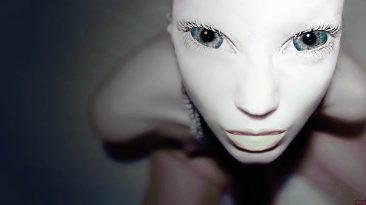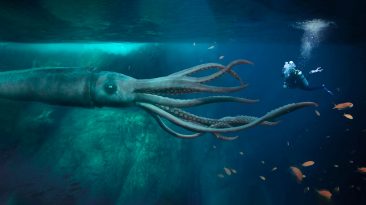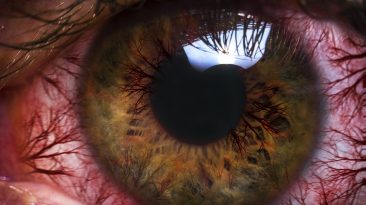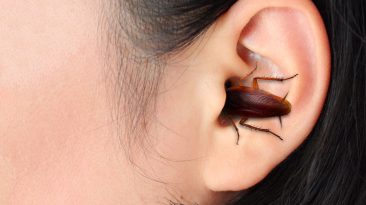If you had not two, but three eyes, where would you like your third eye to be ? Sure, the back of your head would be the obvious choice. But what if you placed it someplace unexpected? How would your third eye see the world? In what ways could it make your life better? And why could it turn it into nightmare?
Some members of the animal kingdom have more eyes than us. Certain spiders have up to eight eyes. And that gives them greater motion detection and depth perception. There is also a third eye located on the top of the head of some amphibians, sharks and lizards. It’s called the parietal eye. You most likely have never seen it since it’s covered by a thin layer of skin.
It can be easier to spot on younger lizards if you look closely. This third eye has its own lens and retina. It could also act like a compass. Pretty wild, eh? So, if some animals proudly rock their third eye, why should we settle for two? Let me tell you, we almost had a chance to evolve with three eyes. Our pineal gland, the one responsible for hormone regulation, is sort of an atrophied light sensor.
Had our evolution been slightly different, there’d be an extra eight billion eyeballs on the planet. Yeah. This could’ve been too much for our foreheads to handle. But this eye-catching additon could have given you greater depth perception. Maybe even increased night vision if your forehead eye contained more rods.
These rods help you see in the dark, and the more of them you have, the better your ability to see in low light environments. And if your third eye had more cones, you would see color differently. Just one extra cone cell could help you see 99 million more colors than you normally do. Eye think that would be cool, don’t you?
Unfortunately, chances are your third eye wouldn’t be nearly as advanced. An eye is cognitively taxing for your brain. Adding one to your body might feed you a lot of information, but you’d have limited mental resources to process it. Most likely, your third eye would only be good for detecting light and movement, but not much else.
Which is about as much as the parietal eye can do in other species. Now why does the third eye HAVE to be at the front? Couldn’t you at least get it in the back of your head? Wouldn’t we had been safer from all the predators hunting us back in prehistoric times? You might think so, but millions and millions of years of evolution disagree.
The extra eye would be limited to helping distinguish the motion of potential threats. This might be why even eight-eyed spiders have all of their peepers facing forward. Primates like us are extremely social. We rely on our tribes, rather than our super organs, to protect us from predators. And we’re still equipped with great hearing that gives us advance notice if trouble is lurking nearby.
Also, imagine how limited your hairstyle options would be with a third eye on the back of your head. Not to mention that always seeing what’s behind you would probably distract you from focusing on what’s in front of you. But what if your third eye wasn’t on your head at all? What if it evolved somewhere around your belly button area?
You know, to give you the low-angle view of the world. Imagine driving a car while staring at the new pair of shoes you just picked up. Or putting on a wool sweater. Everything about your world would change in order to accommodate this optic addition. But, with this third eye being so much less advanced than our other two, what’s the point in having it at all? Maybe evolution has something else in store for us as our bodies continue evolving.
Sources
- “12 Of The Coolest Eyes In The Animal Kingdom”. Joanne Kennell. 2015. thescienceexplorer.com.
- “Calf born with third eye on forehead — but still destined for slaughter”. Liam James. 2021. independent.co.uk.
- “Can Animals Have A Third Eye?”. John Staughton. 2022. scienceabc.com.
- “‘Extremely Rare’ Three-Eyed Cow Born On Welsh Farm Will Still Be Eaten”. Joe Roberts. 2021. metro.co.uk.
- “Evolution of the eye”. 2022. newscientist.com.



























